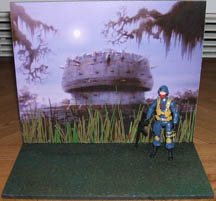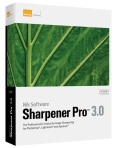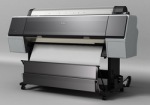 Whether you shoot weddings, portraits, sports, products, or landscapes, it’s becoming clear that the new, hybrid VDSLR cameras are going to profoundly affect what clients will expect when they hire a professional photographer. (Why hire two separate professionals to shoot stills and video, when one qualified professional can deliver both?)
Whether you shoot weddings, portraits, sports, products, or landscapes, it’s becoming clear that the new, hybrid VDSLR cameras are going to profoundly affect what clients will expect when they hire a professional photographer. (Why hire two separate professionals to shoot stills and video, when one qualified professional can deliver both?)
You can learn more about how to integrate HD video into your business during two platform classes at WPPI 2010, which runs from March 4 to 11 at the MGM Grand in Las Vegas, NV.
 On Tuesday, March 9, LexJet is co-sponsoring a two-hour Platform Class entitled Digital Cinema. During this class, celebrity wedding and portrait photographers Charles and Jennifer Maring will explain why hybrid cameras that capture both photographic stills and HD video offer limitless potential for creative expression. The Marings will explain how to expand your horizons by creating products for delivery in print, books, the big screen, the Web, and mobile. They will share insights into how new technologies are raising the bar, redefining what it means to be a visual artist, and creating opportunities that can affect your studio’s public relations and bottom line.
On Tuesday, March 9, LexJet is co-sponsoring a two-hour Platform Class entitled Digital Cinema. During this class, celebrity wedding and portrait photographers Charles and Jennifer Maring will explain why hybrid cameras that capture both photographic stills and HD video offer limitless potential for creative expression. The Marings will explain how to expand your horizons by creating products for delivery in print, books, the big screen, the Web, and mobile. They will share insights into how new technologies are raising the bar, redefining what it means to be a visual artist, and creating opportunities that can affect your studio’s public relations and bottom line.
 On Monday, March 8, Canon Explorer of Light Bruce Dorn will talk about The Moving Portrait: HD Video for Still Photographers. Dorn will talk about how portrait photographers can capture both still photographs and HD video in a single session, all while using a familiar camera system. He will share tips, tools, and techniques, for exploring this emerging trend and explain why still shooters shouldn’t be intimidated by this unfamiliar workflow. Dorn is a member of the Directors Guild of America and brings 25 years of Hollywood experience to the table.
On Monday, March 8, Canon Explorer of Light Bruce Dorn will talk about The Moving Portrait: HD Video for Still Photographers. Dorn will talk about how portrait photographers can capture both still photographs and HD video in a single session, all while using a familiar camera system. He will share tips, tools, and techniques, for exploring this emerging trend and explain why still shooters shouldn’t be intimidated by this unfamiliar workflow. Dorn is a member of the Directors Guild of America and brings 25 years of Hollywood experience to the table.
These are just two of the more than 50 platform classes available to photographers who register for the full conference.
Business Institute: If you’re just starting out in the photography business, or need to get re-energized, consider attending the Business Institute. The program kicks off Friday evening, March 5 with an inspiring session by Sandy Puc and Mitche Graf on “Life Without Boundaries: The Rebirth of Passion.” The Institute runs from 8:00 am to 7 pm on Saturday, March 6, with four presentations by successful photographers and a panel discussion and Q&A session with all of the speakers. The four sessions on Saturday include:
- Bankable Branding by Jennifer Gilman
- The New Renaissance: Connect, Revise and Grow on the Web by Matt Hill
- How to Master the Art of Selling Portrait and Wedding Photography by Michael Warshall
- The 7 Habits of Highly Effective Photographers by Michael Costa
The Business Institute is offered for a standalone price of $99 or can be purchased as an add-on to a full convention registration.
“For professional photographers looking to thrive in today’s competitive business environment, WPPI is the place for them to learn all they can to succeed,” said George Varanakis, WPPI’s Group Publisher and Executive Vice President. “Photographers who attend WPPI’s educational sessions and programs are sure to leave with an adrenaline rush that will help them put all the good ideas they learn at WPPI to use immediately in their own businesses.”
The trade show held in conjunction with WPPI will be open March 8, 9, and 10 and will feature hundreds of exhibitors and new products.
WPPI (Wedding & Portrait Photographers International) is an organization that serves the educational and business needs of wedding and portrait photographers. For full details about the WPPI Conference and Show visit: www.wppionline.com
Filed under: Photography Associations, Photography Training, Uncategorized | Tagged: photography conferences, Photography Training, wedding photography business, WPPI | Leave a comment »


















